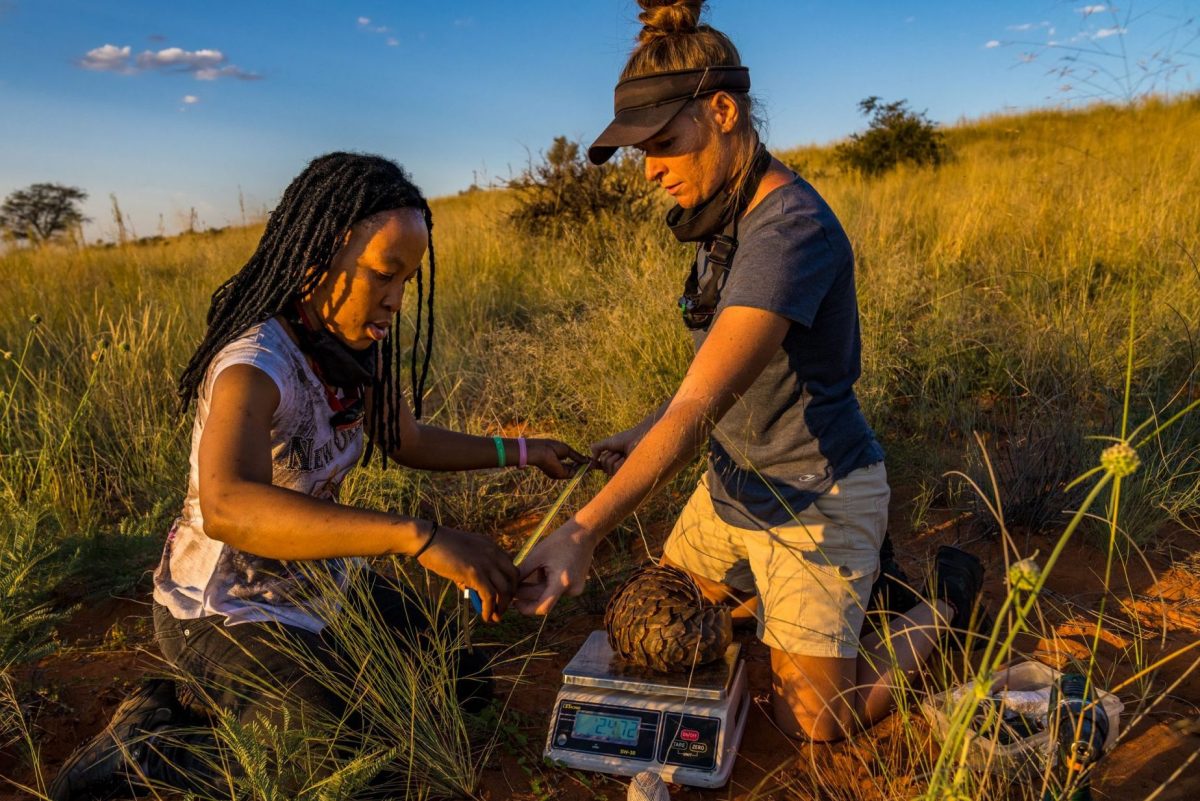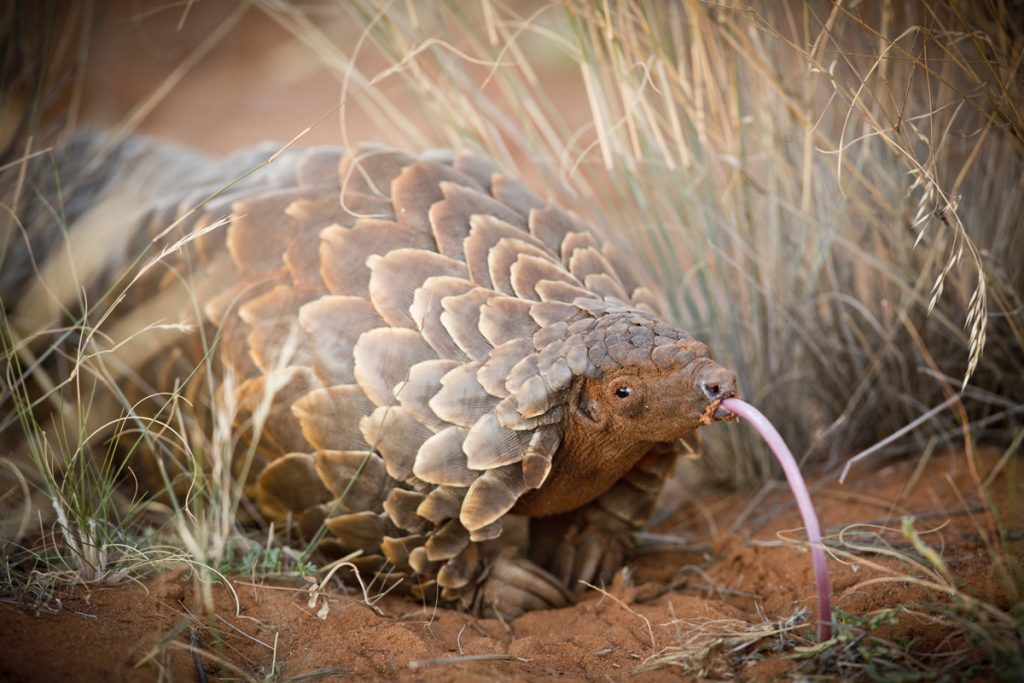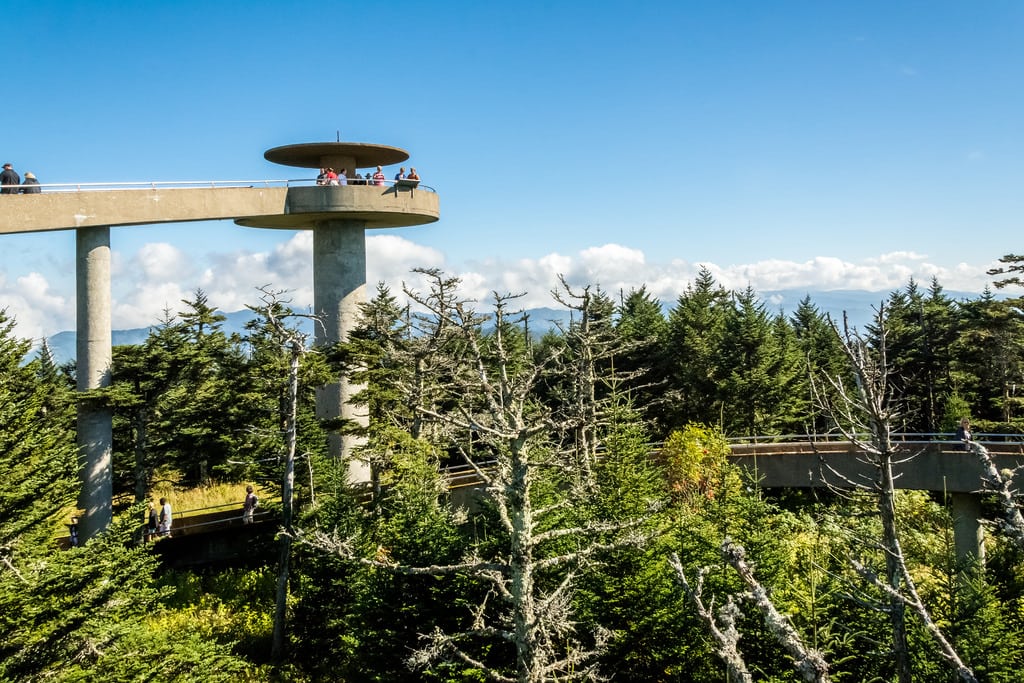The Kalahari Game Reserve Scientist Studying Climate Change Through the Solitary Pangolin

Skift Take
Dr. Wendy Panaino spends her time in the vast, red-hued Kalahari desert, researching and documenting a mythological animal that few of us will ever see in real life. This animal is the pangolin, a solitary, primarily nocturnal creature that looks like something out of a fairytale. It is covered in scales and can roll up into a ball to protect itself, with a spiky tail that can fend off predators. The animal makes its home in the dry, arid climate of the Kalahari, and is currently critically endangered from poaching, owing to the demand for its meat and scales from Asia.
Dr. Panaino works in the research wing of Tswalu Kalahari Reserve, a privately owned game reserve in the Northern Cape, South Africa. The property hosts guests from all around the world who want to see wildlife but also functions as an ambitious conservation project founded in 2006. From a small seed fund, the Tswalu Foundation has grown into a world leader in the field of environmental research within the southern Kalahari and regularly attracts scientific teams who visit from around the world.
Panaino was seduced by the Kalahari. Having grown up in Johannesburg, she made her way to the bush doing research for her master’s degree, followed by the higher pursuit of a Ph.D. As a scientist studying both animals and climate, she’s witnessed dynamism in this portion of the desert: “I have been a big fan of the climatic extremes I have witnessed over the last seven years in the Kalahari, she said. “From very arid (but not true desert), with the landscapes presenting vast, open, and red sandy scenes, to very wet conditions, with waterfalls, springs, and the most magical variety of green colors carpeting the landscape.”
Panaino interacts with and studies the elusive pangolin as a way to study a broader topic: climate change. Her Ph.D. work aims to understand the potential responses of Kalahari pangolins to climate change, related to diet, activity patterns, and body temperature. The location she works in is perfect to observe these changes. “The Kalahari is recognized as a climate change “hot spot”, where the effects of climate change are predicted to be profound, she said. “The Kalahari Endangered Ecosystem Project (KEEP) aims to understand how the Kalahari ecosystem might respond to environmental change so that priority species may be identified and to make better predictions about how changing climate might impact the workings of this system."
By identifying the most vulnerable species to climate change, better conservation policies can be made based on data and tangible parameters.

Panaino further explained the nuances of the area she is studying: “What is traditionally referred to as the “Kalahari desert” is most of the interior of Botswana and parts of northern South Africa (where Tswalu is located) and is characterized by temperature extremes and little available surface water making it an area particularly susceptible to the effects of climate change," she said.
With pressure mounting on African ecosystems stemming from population increases, the overall demand for water will more than double in the first half of the 21st century. Thus, more and more emphasis is being placed on research to understand the impacts of climate change in Africa as well as to find ways to mitigate the threats in the medium to long term.
Panaino suggests that the southern hemisphere is behind much of the northern hemisphere in truly understanding and studying climate change and thinks there’s a missing link in research that is vitally needed, given Africa’s rising importance on the world stage in terms of population growth. “What lacks is collaborative, multi-species, multi-aspect research to answer bigger ecosystem-level questions related to climate change, which is vital for understanding ecosystems so that we can conserve them,” she said.
At the center of this important research is Panaino’s relationship with this elusive and immensely unique animal. To Panaino, the fascination is inexplicable: “It is one of those situations where you have to experience it to know. When you see a pangolin you are almost mesmerized by it, but you simply cannot explain it…They are also a relatively understudied mammal, making observing them that much more special — you could learn something new about them at any moment.”
One of her favorite parts of the job is also interacting with the thousands of guests from around the world that visit Tswalu to go on game drives. The groups are welcome to join her on research, in the hopes they will actually see the nocturnal creature, though Panino issues no guarantee of seeing them. She jokes that she needed to turn partially nocturnal as a researcher in order to interface with them. The life of a researcher is not always easy: technological failures led to some data loss on tracked animals and Panaino says that a field biologist has to be adaptable and work around the constraints of a remote, highly changing area such as the Kalahari.
While most of her research is for broader academic knowledge, she does also serve as a diplomat of sorts, spreading word about the importance of conservation to safari guests that visit the property. And fortunately, the awareness and depth of knowledge are growing: “Many guests I have spoken to over the last three years have expressed that they are choosing more destinations that have a strong research and conservation angle so that they feel like their trip makes a meaningful contribution to conservation, she said. “I have also noticed a change in the types of questions I get asked about pangolins...Over the last few years, however, many of the questions have been focussed more on global pangolin conservation efforts, and how pangolins impact their ecosystem, for example. I have thoroughly enjoyed these deeper conservation-related questions as the conversations have ended up feeling more impactful.”
Panaino’s job is utterly unique, sitting at the intersection of huge issues of climate change in a particularly vulnerable part of the world, juxtaposed with a curious, elusive animal that looks dreamt up in science fiction. But broadly, her mission is one of protecting biodiversity in one of the world’s most beautiful and unique places: “As a naturalist at heart, I believe that the Kalahari is an incredibly special place… and deserves to be witnessed and explored by anyone who has a passion for the outdoors. Above all, it is a place worthy of protection by us all.”
Skift’s in-depth reporting on climate issues is made possible through the financial support of Intrepid Travel. This backing allows Skift to bring you high-quality journalism on one of the most important topics facing our planet today. Intrepid is not involved in any decisions made by Skift’s editorial team.





